
< More BioPhotonics NewsletterSubscribe to our E-NewslettersBioPhotonics Newsletter: OCT in Interventional Cardiology, Light Therapy for Cardiac Arrhythmia, and more... (6/28/2023)
BioPhotonics Newsletter: OCT in Interventional Cardiology, Light Therapy for Cardiac Arrhythmia, and more...
Monthly newsletter focusing on how light-based technologies are being used in the life sciences. Includes news, features and product developments in lasers, imaging, optics, spectroscopy, microscopy,
| If you are having problems seeing this newsletter, please click here to view |

|
Monthly newsletter focusing on how light-based technologies are being used in the life sciences. Includes news, features and product developments in lasers, imaging, optics, spectroscopy, microscopy, lighting and more. Manage your Photonics
Media membership at Photonics.com/subscribe.
|
|
Catheter Use Propels Optical Coherence Tomography in Interventional Cardiology
Optical coherence tomography (OCT) is an interferometric imaging technique that uses light in the near-infrared spectrum to provide detailed, cross-sectional images of biological tissue. OCT is therefore widely used for clinical ophthalmology and has potential for minimally invasive microscopic imaging of other organ systems in vivo. For interventional cardiology, implementing OCT using an intracoronary catheter enables the imaging of coronary morphology in real time in vivo. The spatial resolution of OCT at ~15 μm is an order of magnitude higher than predicate intravascular ultrasound, enabling the visualization of more detail pertaining to arterial atherosclerotic pathology.
|
|
|
|
Light Therapy Could Soon Treat Cardiac Arrhythmia
Heart disease is the leading cause of death in the developed world. Sudden cardiac death is triggered by the breakdown of a normal periodic heart rhythm, also known as the sinus rhythm. The emergence of aberrant, high-frequency sources of electrical activity in the heart causes cardiac arrhythmia and results in the failure of the heart to pump blood. While traditional methods, such as ablation and electrical stimulation or defibrillation, can efficiently treat this condition, they are painful and potentially damaging to the healthy myocardium and other tissues. Optogenetics has recently emerged as a potential approach to treating arrhythmias by light rather than by the electrical field. The miniaturization of delivery technology may soon provide lifesaving medical care.
|
|
|
|
Wearable Microscopes Image Transmission of Pain Signals
Researchers at the Salk Institute for Biological Studies have developed wearable microscopes and an implantable microprism that together aim to help scientists uncover the role that the spinal cord plays in relaying pain signals at the cellular level. The researchers used the microscopes and microprisms to perform high-definition, real-time imaging of the spinal cord’s activity in freely moving mice. Using the technology, the researchers investigated regions of the spinal cord that were previously inaccessible.
|
|
|
|
|
|
.: Featured Products & Services
|
|
|
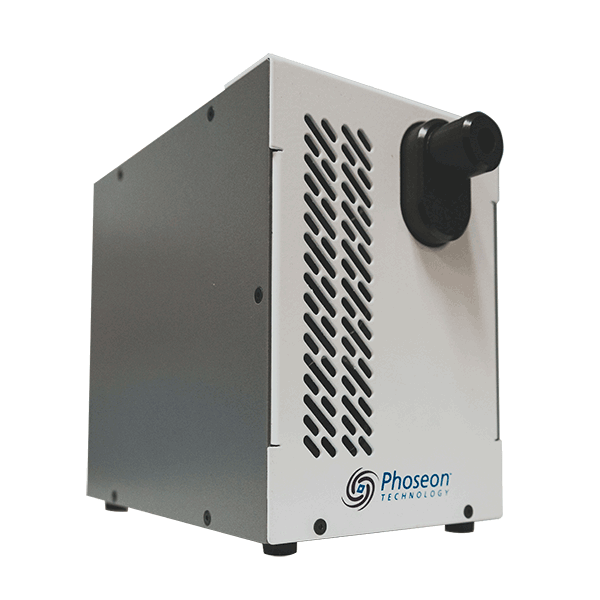 KeyLight™ by Phoseon Technology
KeyLight™ by Phoseon Technology
Phoseon Technology Inc.
KeyLight™ is a compact light source that supports 3-7 channel fluorescence microscopy systems. It brilliantly illuminates your results by delivering intense, broad-spectrum UV and visible wavelengths for a wide variety of colors between 340 nm and 760 nm.
|
|
|
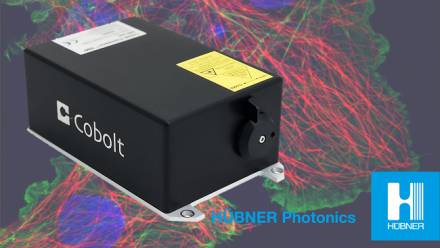 Cobolt Jive™ 561 nm CW Laser – 1 W
Cobolt Jive™ 561 nm CW Laser – 1 W
HUBNER Photonics GmbH
HÜBNER Photonics, manufacturer of high-performance lasers, showcases the release of a higher power model of the Cobolt Jive 561 nm on the 05-01 Series platform. Now with up to 1 W CW output power, the Cobolt Jive is perfectly suited to demanding applications in fluorescence microscopy, especially for super resolution...
|
|
|
|
|
| |
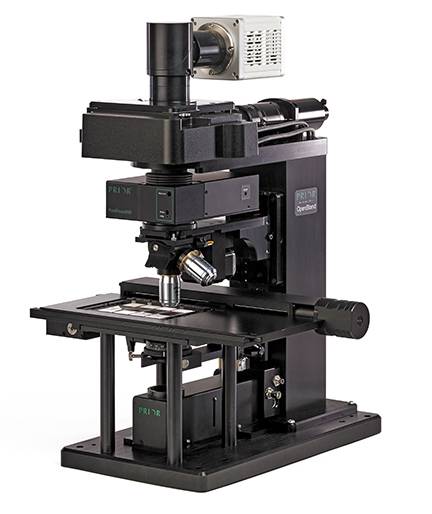 Custom Microscopes and Optical Systems
Custom Microscopes and Optical Systems
Prior Scientific Inc.
Prior Scientific has developed OpenStand to offer a working platform to build OEM solutions and one-off customizations with excellent value for money and reduced development time. Whether developing new automation techniques and software or developing new imaging methods, you can quickly find that you need a microscope system tailored to your application.
|
|
|
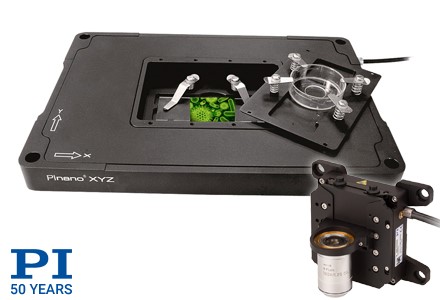 Nanopositioning for High-Res Microscopy
Nanopositioning for High-Res Microscopy
PI (Physik Instrumente) LP, Motion Control, Air Bearings, Piezo Mechanics
PI's new Fast Focus Stages and Multi-Axis Piezo Flexure Scanners for Microscopy are designed to improve the performance of high-resolution microscopy. Choice of piezo and voice coil motors. Controlled by PI's high-performance motion controllers with powerful software for highest linearity and dynamics.
|
|
|
|
|
| |
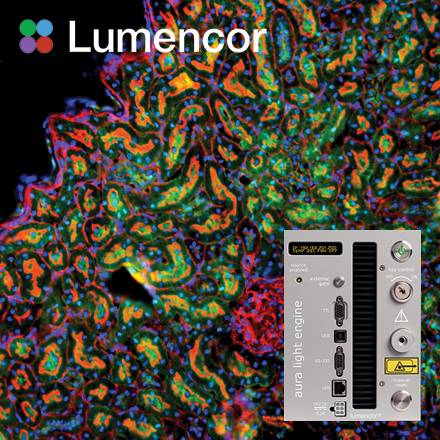 AURA Light Engine
AURA Light Engine
Lumencor Inc.
Why settle for archaic bulbs and weak LEDs when optimal solid-state performance and value are within reach? AURA Light Engine provides bright, stable, reproducible illumination for OEMs. Proprietary light sources and advanced electronics make this excitation subsystem ideal for instrument manufacturers. Customization is available upon request.
|
|
|
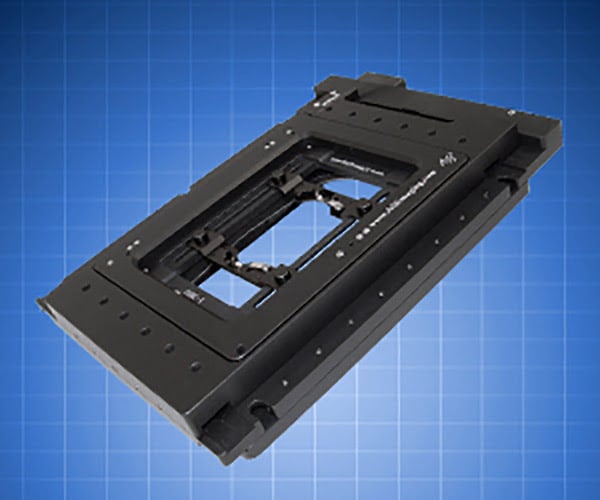 Ultra Precise Piezo-Z Focus Stage
Ultra Precise Piezo-Z Focus Stage
Applied Scientific Instrumentation Inc.
The stage is capable of XY resolutions down to 10-20 nm and Z resolutions to the 1-nm range. It can be used with rapid z-sectioning and autofocus systems. It prevents focus drift when used with our CRISP system.
|
|
|
|
|
| |
|
DNA-Barcoded Fluorescence Imaging Illuminates Core Cell Components
Since many core components of cells — like DNA, RNA, proteins, and lipids — are just a few nanometers in size and substantially smaller than the resolution limit of traditional light microscopy, the exact composition and arrangement of these molecules and structures is thus often unknown. This results in a lack of mechanistic understanding of fundamental aspects of biology.
|
|
|
|
High-Speed Two-Photon Microscopy Captures Rapid Bio Processes In Vivo
Two-photon microscopy (TPM) enables deep tissue imaging of complex biological processes at high resolution. However, the ability to visualize some biological processes, such as neural activity at the sub-millisecond scale, requires high-speed imaging in addition to high resolution.
|
|
|
|
Spatial Light Modulation Gauges How Lenses Slow Progress of Myopia
Myopia, or nearsightedness, is one of the most common ocular disorders worldwide and a leading cause of visual impairment in children. Although specialized eyeglass lenses have been clinically tested to treat myopia progression, an in-depth optical characterization of the lenses has not yet been performed. Researchers from the ZEISS Vision Science Lab at the University of Tübingen and the University of Murcia undertook a comprehensive characterization to investigate the properties of spectacle lenses designed to slow the progress of myopia. Results of the study could help increase the efficacy of future lens designs.
|
|
|
|
|
 Confronting the Drug Epidemic with Portable Spectroscopy
Confronting the Drug Epidemic with Portable Spectroscopy
Thu, Jul 6, 2023 1:00 PM - 2:00 PM EDT
Portable spectrometers have the potential to be a powerful tool for combatting the modern illicit drug trade in the field. The most significant advantage of portable spectrometers over other field tests is their capability to provide confirmatory analysis, which is rapid, reliable, and creates a reviewable record. Although no single portable spectrometer can analyze all samples, for example from bulk to trace or pure substances to complex mixtures, each modern instrument has its advantages and limitations with regard to the detection and identification of illicit drugs. Ultimately, a toolbox approach is needed to ensure that the right tool is used for the right job in the right way. Brooke Kammrath and Pauline Leary highlight applications of portable spectroscopy and spectrometry in field detection of illicit drugs which both have notable effects on the delivery of improved criminal justice. Sponsored by Metrohm USA Inc.
|
|
|
|
Features
Quantitative Phase Imaging, Positioning Systems, Fluorescence Polarization Imaging, Hyperspectral Imaging
Photonics Media is currently seeking technical feature articles on a variety of topics for publication in our magazine BioPhotonics. Please submit an informal 100-word abstract to Senior Editor Doug Farmer at [email protected], or use our online submission form www.photonics.com/submitfeature.aspx.
|
|
|
|
About BioPhotonics
 BioPhotonics is the global resource for research, business and product news and information for the biophotonics community and the industry's only stand-alone print and digital magazine.
BioPhotonics is the global resource for research, business and product news and information for the biophotonics community and the industry's only stand-alone print and digital magazine.
Visit Photonics.com/subscribe to manage your Photonics Media membership.
View Digital Edition
Manage Membership
|
|
|
|
